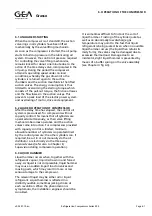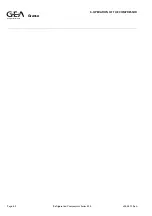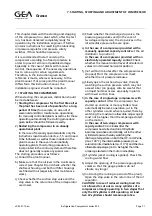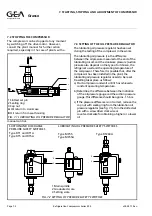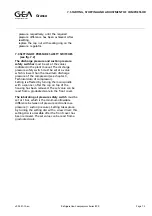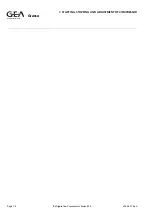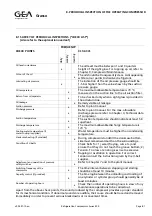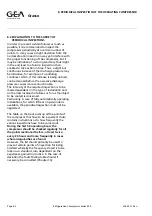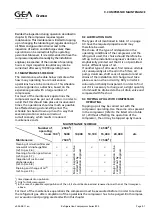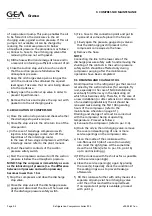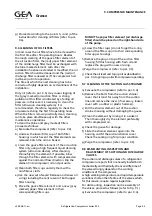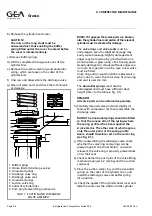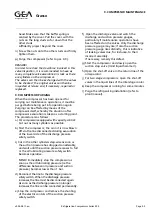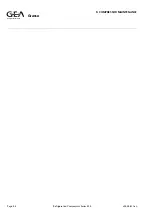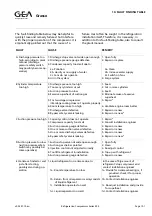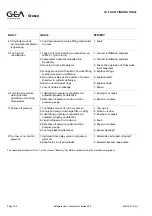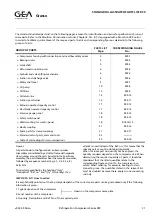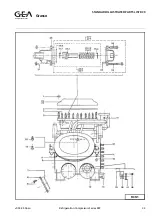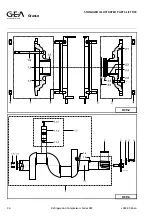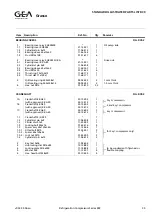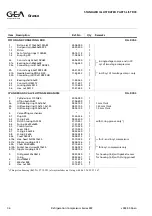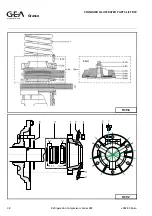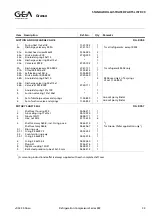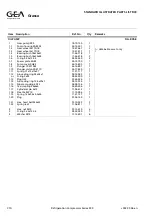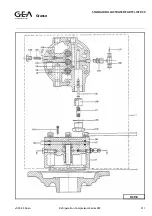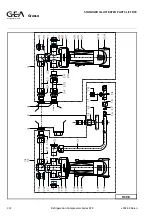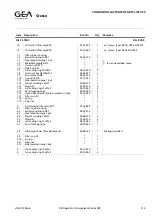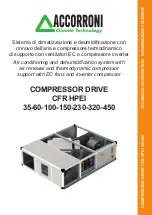
The fault-finding table below may be helpful to
quickly trace and remedy failures that interfere
with the proper operation of the compressor. It is
emphatically pointed out that the cause of a
failure must often be sought in the refrigeration
installation itself. Therefore, it is necessary, in
addition to this fault-finding table, also to consult
the plant manual.
FAULT
CAUSE
REMEDY
A Discharge pressure too
high, according to plant
manual (discharge
pressure safety switch
may possibly become op-
erative)
1. Discharge stop valve not wide open enough
1. Open fully
2. Discharge pressure gauge defective
2. Repair or replace
3. Condenser capacity too small due to:
3a. Pollution
3b. Hardly or no supply of water
3c. Fans do not operate
3a. Clean
3b. Increase water supply
3c. Switch on fans
4. Air in the system
4. Purge system
B Cylinder temperature
too high
1. Discharge pressure too high
1. See A
2. Too many cylinders cut out
2. Cut in more cylinders
3. Suction pressure too low
3. See D
4. Exessive superheat of suction gas
4. Eliminate cause of exessive
superheat
5. For two-stage compressors:
interstage cooling does not operate properly
5. Repair*
6. Room temperature too high
6. Ventilate engine room better
7. Discharge valve defective
7. Repair or renew
8. By-pass safety valve is leaking
8. Repair or renew*
C Suction pressure too high 1. Capacity control does not operate
1. Repair*
2. Compressor capacity too small
2. Consult installation engineer
3. Suction pressure gauge defective
3. Repair or renew
4. One or more suction valves defective
4. Repair or renew
5. One or more discharge valves defective
5. Repair or renew
6. By-pass safety valve is leaking
6. Repair or renew*
D Suction pressure too low
(suction pressure safety
switch may possibly be-
come operative)
1. Suction stop valve not wide open enough
1. Open fully
2. Suction gas strainer poluted
2. Clean
3. Injection control not adjusted correctly
3. Re-adjust control
4. Too little refrigerant in installation
4. Top-up with refrigerant
5. Suction pressure gauge defective
5. Repair or renew
E Crankcase frosted or wet
just after starting,
possibly also during op-
eration
1. Liquid refrigerant in crankcase due to:
In the case of big amount of
refrigerant: stop compressor and
contact installation engineer
1a. Room temperature too low
1a. Provide for crankcase heating or, if
provided, check it for proper
operation
1b. Return from oil separator mainly consists
of liquid refrigerant
1b. Contact installation engineer
1c. Installation operates too wet
1c. Re-adjust installation and provide
for superheat
1d. Liquid separator too small
1d. Contact installation engineer
Refrigeration Division
Grasso
10. FAULT FINDING TABLE
v002.97.10.en
Refrigeration Compressors Series RC9
Page 10.1

